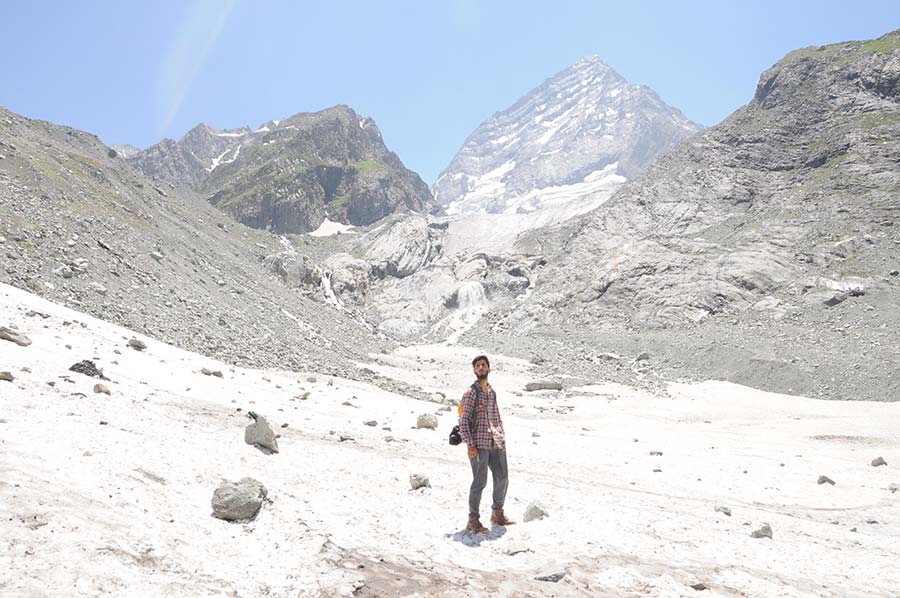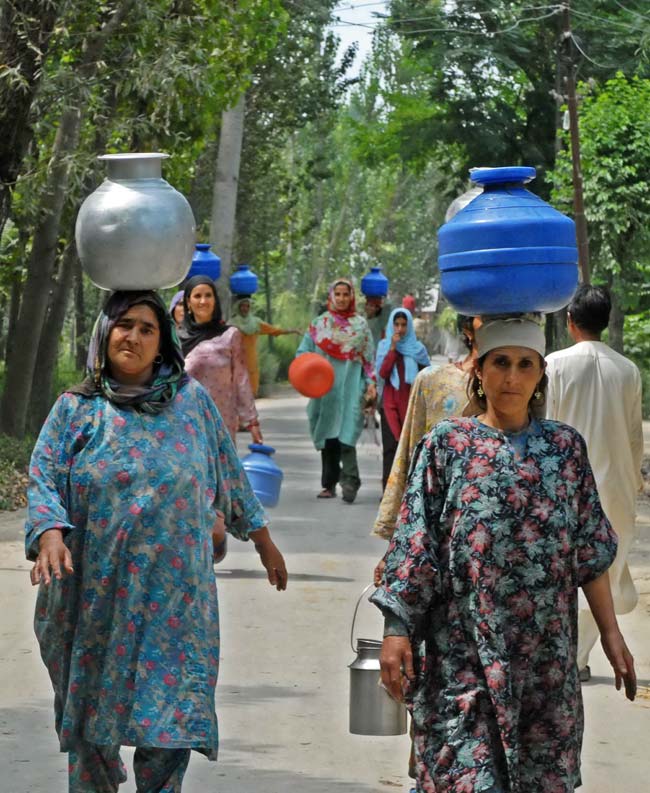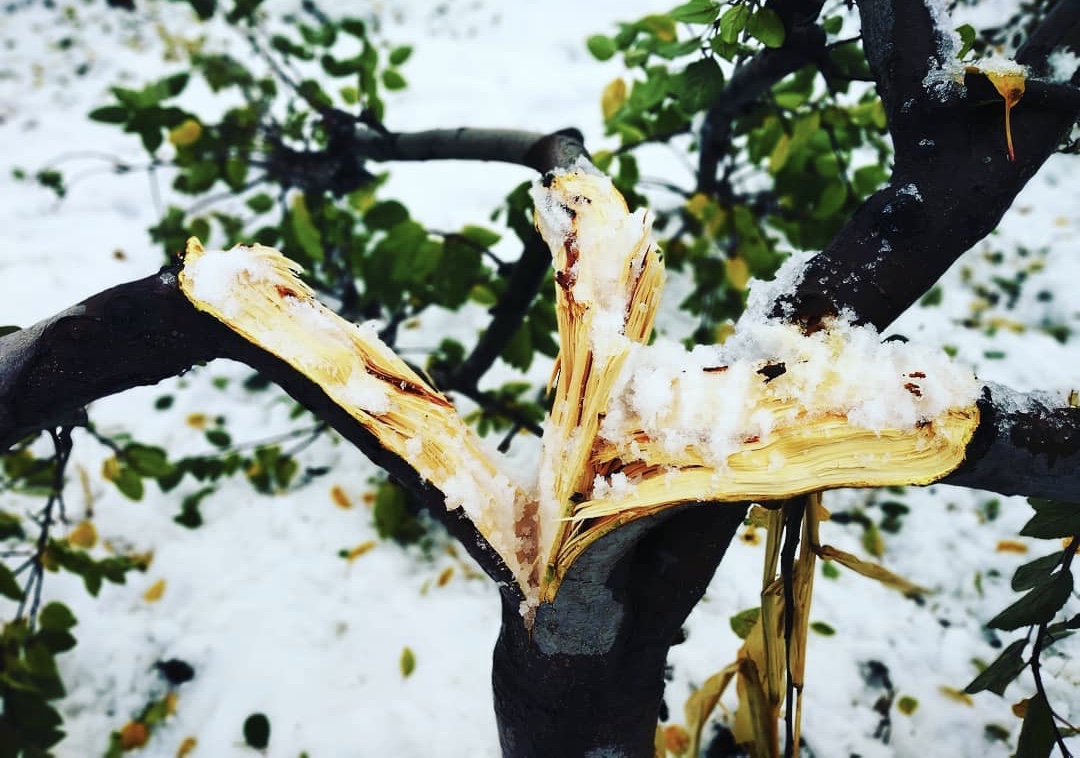by Syed SuhailYaqoob
The agriculture sector has been the backbone of Kashmir’s economy throughout our ancient history as well as modern times. A cursory look at the data reveals its significance.

Although the sector contributes less than 18 per cent of Gross State Domestic Product (GSDP), it, however, employs more than 70 per cent of our population both directly and indirectly. Moreover, more than 72 per cent of our population resides in rural areas, which makes their interaction with agriculture inevitable.
Recalling the mass unrest of 2008 and 2010, the 2014 floods, 2016 Burhan crisis, 2019 reading down of Article 370 and the ongoing 2020 pandemic, the agricultural sector still managed to stay afloat despite other sectors being crippled. Although the agriculture sector has sustained our economy it has, however, come under severe strains owing to a number of factors.
Climatic Changes
The primal risk to agriculture sector emanates from environmental degradation. For the last few years, higher risks of flooding, hailstorms, droughts, receding glaciers and water tables have impacted agricultural activities.

According to the data available, there has been an increase in average temperature in the state. Jammu and Kashmir has surpassed the world in average temperature rise recorded in the last 100 years. As against the global increase of 0.8 to 0.9, Jammu and Kashmir has recorded a 1.2 degree Celsius rise in temperature. This will have serious consequences on agriculture.
Food Deficit
It is estimated that the rice, wheat, mustard production in Jammu and Kashmir will be reduced by 6 per cent, 4 per cent and 4 per cent, respectively. The deficit in food production in Kashmir region has already reached 40 per cent, while the deficit is 30 per cent in vegetable production and 69 per cent in oilseed production, putting food security at a greater risk.
According to the Jammu and Kashmir Directorate of Economics and Statistics, there has been a dip in production of rice, maize, wheat, barley, pulses and oilseeds due to the degradation in climate.

Further, the untimely snow and rains have caused havoc to the agriculture sector. In 2019 the untimely snow caused damage of around Rs 5 billion to apple orchards in Kashmir. Apple growers were the hardest hit as the snowfall didn’t only damage the apple crop, but also the apple trees laden with fruit, making them crumble under the weight of snow. The sudden snowfall also disrupted the inter-state transportation of Kashmiri apple as the national highway remained blocked for several days due to extreme weather.
The government, unfortunately, provided meagre amount to farmers which barely compensated for the damages. Moreover, there was an avoidable delay in the implementation of the Crop Insurance Scheme, which could have proved critical at that juncture. The government must implement the scheme urgently as research has suggested that average temperature will increase over time. This presents new challenges for the agriculture sector.
The Jammu and Kashmir State Action Plan on Climate Change, a report prepared by the Climate Change Cell of the Jammu and Kashmir government, has warned that Kashmir is heading for the peculiar climatic scenario with net temperature going up.
Declining Agricultural Land
The agriculture sector is looming under another crisis, which will surely impact food security, income and employment. According to the latest data available with the government, there has been a consistent decline in average land holdings in the state.

Simple economics suggests that lower average landholdings are neither profitable nor provides stability in incomes. A report by the Union Agriculture Ministry brought out glaring shrinkage of agricultural land per person in the state. The size of landholding has shrunk from 0.62 hectares per person in 2011 to 0.59 hectares in 2016. According to the same report the arable land in the state has shrunk from 0.14 hectare per person in 1981 to 0.08 hectare per person in 2001 and further to 0.06 hectare per person in 2012.
The data provided by the Jammu and Kashmir Directorate of Economics and Statistics reveals that more than 90 per cent of landholdings fall under marginal category which implies that income from land is not enough profitable. Not only it results in less farm mechanization but also speeds up the conversion of agriculture land for non-agricultural purposes.
The Kashmir valley had 4, 67,700 hectares of agricultural land in 2015, which has shrunk to 3, 89,000 hectares in 2019. Kashmir has lost 78,700 hectares of agricultural land to non-agricultural purposes since 2015. The major conversion of land was in paddy and wheat which are essential for our food safety. Data shows that the land under paddy cultivation in Kashmir region shrunk from 1, 48,000 hectares in 2015 to 1, 40,000 in 2018.
Similarly, maize cultivation shrank from 100,000 hectares to 76,000 hectares over these years. Furthermore, the cultivation of pulses has declined from 14,600 hectares to 12,767 hectares. Oilseed cultivation also plummeted from 86,000 hectares to 81,000. Unfortunately, the government is yet to wake up. Although the laws have been passed which almost criminalises the conversion of agriculture land to non-agriculture purposes, the process, however, continues abated.
Feminisation of Agriculture
Almost every country including India is passing through this phase where women participation in agriculture is rising. Jammu and Kashmir is also witnessing an increase in the participation of women in agriculture. The comparisons between the census of 2001 and 2011 reveal that women labour force participation has increased from 22 per cent in 2001 to 24 per cent in 2011.

PHOTO BY BILAL BAHADUR
Moreover, the percentage of women cultivators has increased from 36 per cent to 38 per cent during the same years. In Kashmir, women-headed households have increased from 6 per cent in 2001 to 10 per cent in 2011. During these years male participation as cultivators as well as labours have declined. Although women participation has increased over the years, still women lack ownership of land titles, credit and decision making in the agriculture sector.
Although the government has initiated many programmes for women, however, the section of women in agriculture has been completely neglected. The government still considers agriculture as a male domain, which is clearly not the case. Unfortunately, the policies are still male-biased which lowers the productivity of agriculture.
There have been, however, many progressive decisions which might improve the conditions of women working in agriculture. The Supreme Court of India recently gave a progressive decision to make daughters equal shareholders in parental property. The implementation has to be effective in order to improve the status of women in agriculture. Many time laws are bypassed and customs are followed. Although Kashmir is a Muslim majority yet few women have land ownership. Muslim personal laws clearly give women a share in all type of property.
It has become imperative to increase the share of land ownership among women, provide them with credit and incentives. It is important to create Self Help Groups among women in agriculture which will boost vegetable cultivation and cultivation of other essentials. As of today, the growth of agriculture is crucially dependant on women.
Communalisation of Politics
This aspect has been curiously overlooked. As of today, the Kashmir is depicted as an ‘enemy’ region in the majoritarian-nationalism. Over the years the farmers in Kashmir have seen a significant decline in the incomes from the transactions. The major issue is the stronghold that few states hold over our produce.

For instance, in a few states, the produce of agricultural is exported which includes prominently Delhi, Gujrat and Bombay. In those states, the produce is sold at whatever prices and the agriculturalists have little choice. Although the buyers have created their own unions the agriculturists still have no important and influential unions particularly in the apple industry. The lack of Unions always pushes down the prices of agriculture production.

It is imperative that the government comes up with a plan to create influential unions which will protect incomes of Kashmir’s marginal landholders. Moreover, the state government has to create a process by which the agriculturalists connect directly with the international buyers so that the intermediaries do not take advantage of our political situation.
Unfortunately, the state is yet to create a certain process which will destroy the shackles of intermediaries on our agriculture sector.
Post-Script
Although agriculture looms under crisis, yet there are opportunities for it to grow. The government must create unions in Apple industry to protect the income of farmers, implement strict laws to prevent the conversion of agriculture land to non-agricultural purposes and provides incentives to women in agriculture. The state is heading through the ‘Feminisation of Agriculture’ phase and it is important to provide them with land ownership, credit facilities so that there is growth in the agriculture sector.
(Syed Suhail Yaqoob is teaching economics at Cluster University Srinagar. The opinions expressed in this article are those of the author’s and do not purport to reflect the opinions or views of Kashmir Life.)















